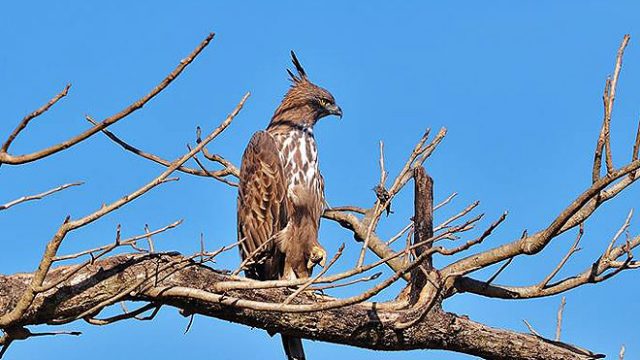‘Tis the time to go bird watching. Winter is the time when migratory birds stop by on their flight south to escape the bitter winter of north and central Asia. Usually, the birds start arriving around September and leave around March. Observing birds is fun in any case, be it the ‘resident’ species or the ‘guests’ – some so small that they are hard to spot while other flaunt their plumes with full pride; some are diffident; others are masters of mimicry; while some species are literally teetering on the edge of extinction. Here is a region-wise list of some of the popular bird watching areas in India.
NORTHERN ZONE:
North India and the Himalayan foothills provide one of the best locations for bird-watching. Jim Corbett National Park has both local and migrant species. Some of the most common birds seen here are forktails, minla, black throated tits, minivets, and laughing thrushes. Keoladeo Ghana National Park (or Bharatpur) is India’s best known bird sanctuary. The marshy lakes of Bharatpur are home to huge flocks of waterfowls and waders; and November-March is the best time to visit to see rare and threatened species like the sociable lapwing, Indian courser, greater and Indian spotted eagles, painted and Asian openbill storks. Ranthambore National Park in Rajasthan might be best known for its tigers but it also offers some of the best locations to watch birds – Malik Talao, the Ranthambore Fort, Rajbagh Talao, Padam Talao and the Jhalra area. To spot common cranes and the greater flamingos, one must visit Najafgarh Jheel (Delhi).
CENTRAL ZONE:
Kanha, Pench and Bandhavgarh, also well-known for tigers, are now also favourites with birders. The Marble Rocks, near Jabalpur, is home to the streak-throated swallows, Brahminy ducks and the rare – avocet.
EAST AND THE NORTHEASTERN ZONE:
Home to more than 850 species of birds, the eastern flank of India is considered as one of the richest birding areas in the country. Chilika Lake (Odisha) – migratory water fowl arrives from places as far away as Siberia. Sundarbans – this UNESCO World Heritage Site is home to several resident and migratory species (also expect to see the famous royal Bengal tiger). Spotting the resident (but rare) Buffy fish owl is a reward in itself. The Santragachi Lake (20mins drive from Kolkata) is an active breeding ground for ducks and waders. Local NGOs have worked hard to protect this waterbody which belongs to the Indian Railways. The Mishmi hills (Dibang valley) in Arunachal Pradesh; the Brahmaputra basin (Kaziranga-Assam), Majuli, Tinsukia; Loktak and Sendra in Manipur, get a healthy number of palearctics and the altitudinal migrants. Doyang in Nagaland and North Cachar Hills in Assam recently saw a huge flocking of migratory birds – the amur falcons.
SOUTHERN ZONE:
South India is characterised by the Western Ghats range, one of the most important endemic bird areas in Asia. Globally threatened species such as the Malabar trogon, Sri Lanka frogmouth, white-bellied shortwing, spoon-billed sandpiper are the main highlights of this region. The Nilgiri or the Blue Mountain is home to some restricted endemic species such as the Nilgiri wood pigeon, Nilgiri laughing thrush, Nilgiri flycatcher, Nilgiri pipit and painted bush quail. The yellow throated bulbul and the grey-breasted laughing thrush (very restricted range) can be spotted in Munnar. Pulicat Lake (Tamil Nadu) is an important stopover on the migration routes of many birds. Approximately, 15,000 flamingos visit the lake every year. Vedanthangal is home to migratory birds such as pintail ducks, the garganey, the grey wagtail, the blue-winged teal, and the common sandpiper. Dotted with small lakes, it acts as a very active feeding ground for the birds. Bandipur, Nagarhole and Bannerghatta in Karnataka are also a stopover point for winter migrants. Winter breeders like the painted stork, white ibis etc. can be found here in big flocks. The Ranganathittu Bird Sanctuary is one of the most active nesting areas.
WESTERN ZONE:
This zone, which consists of the arid Aravalli hill (spread across Gujarat and Rajasthan) and the Konkan Coast (coasts of Maharashtra and Goa) is home to some of the endangered bird species including the great Indian bustard, the migrant Houbara bustard, and other species like sandgrouse, raptors, wheaters, larks, pipits etc. The Rann of Kutch is an important breeding ground for the greater and lesser flamingos. Every year, to the delight of Mumbaikars, flamingos arrive at the Sewri Jetty (Sewri is on the Harbour Line of Mumbai’s Central Railway) in large numbers.
Ornithology need not be a seasonal hobby. Enthusiasts traverse across the country and with 1,250 species of birds, India offers diverse bird watching zones. Beginners can start with bird watching in wooded areas and water bodies in and around where they live. Joining a birdwatching group where they can accompany ( and learn from) experienced bird watchers is a great way to get initiated. A handy bird guide book, binoculars, notebook and pen (for making a list of the birds observed) are some of the must haves for would-be birders.




